27.12: Supporting Development
- Page ID
- 142396
The environment needs to be safe, support health, be comfortable and convenient, and support development across domains.
Sensorimotor Development
Infants and toddlers learn about and experience life through sensory and motor explorations. They touch, taste, smell, observe, and move through the world around them to make sense of it. Children from birth to 3 years of age live directly through their senses. Therefore, the environment in which infants and toddlers are placed has a tremendous impact. —Lally, Stewart, & Greenwald, 2009, pp. 1.[1] An environment supportive of sensorimotor development includes areas of diverse physical exploration: vertical spaces, small spaces and multi-height obstacles to navigate. Caregivers must go beyond using sensory tables and allow children full body exploration of the environment using their senses. As infants and toddlers move around the environment, caregivers should talk with the child about the use of their senses in exploring and invite the infant or toddler to explore materials or substances using their senses.
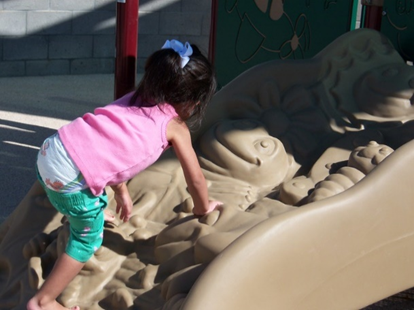
Language And Communication Development Through Literacy-Rich Environments
Arrange the environment to make it easy for infants to communicate with adults, look at books, listen to stories from books, engage in fingerplays, sing, and participate in other activities. By using low shelves, dividers, and other furniture, children can view one another easily to foster communication between peers and teachers.
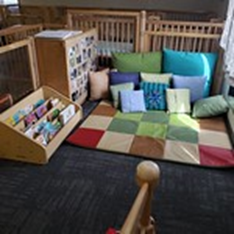
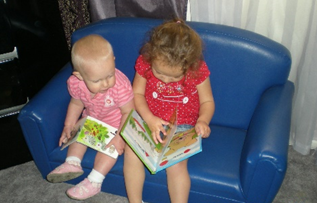
Efforts to foster communication and language development also promote emergent literacy in infants and toddlers. It is essential to provide a learning environment that offers easily accessible and age-appropriate books: creating an environment where books are readily available means infant and toddler caregivers can model engaging in books as part of the curriculum. When infants are interested in looking at books with their teachers, it is important for teachers to embrace such opportunities.[5]
Cognitive Development
When preparing an environment to support cognitive development, consider novel items, provocations, predictability, and familiarity. Infants enjoy searching for favorite and familiar toys. Finding everyday items gives them a sense of predictability and competence, the feeling of "I know this!" or "I know where to find that." Infants also enjoy new, inviting objects to pique their curiosity. Provide a primary selection of toys each day, and store the toys in consistent, predictable, and labeled locations in indoor and outdoor play environments; this will help the infants know where to find specific toys. Rotate new items into the play areas regularly to support curiosity. Base the rotation of play materials on careful observation and documentation of infants' play rather than a predetermined schedule. Use interesting arrangements to engage and extend the learning of a curious toddler.[5]
Social-Emotional and Relationship Development
Environments affect everyone to varying degrees. Spaces may influence infants and toddlers more than older children and adults since young children cannot change their environment or move to another area (Lally, Stewart, & Greenwald, 2009).
The spaces a child inhabits introduce the places where people feel welcome, meet, rest, and eat. When these places are familiar ones, similar to the child's home, the environment can help an infant feel safe and connected to the place.
A well-designed environment sets the tone for intimacy that will strengthen the quality of relationships and interactions.[6]
Making thoughtful and careful decisions about a child’s surroundings creates a nurturing, relationship-supporting environment in center-based and home-based childcare settings. Creating an environment that promotes respectful and responsive relationships is crucial to infants' and toddlers' growth and development.[7] Young children develop unique relationships with teachers and rely on these relationships for security and support in the learning environment.[8] Including pictures of the children and their families, providing personal storage space, and displaying children’s artwork communicates to infants and toddlers the space belongs to them. When hanging pictures or adding decorative touches, place them at the children’s eye level to reinforce that they are valued members of the classroom space. Consider taping photos to the floor so mobile infants can see them as they move through the room. (The Ohio State University for the US Department of Defense’s Office of Family Policy/Children and Youth, 2021)
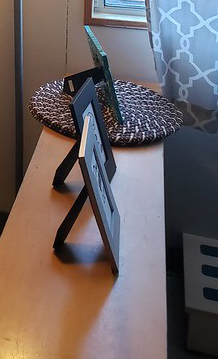
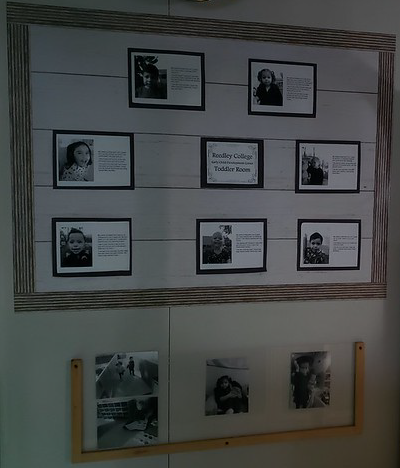
Another aspect of a relationship-supporting environment is a home like atmosphere. Young children spend many hours in the program setting. Therefore, it should become a home away from home: a place of community and togetherness. Children are more likely to feel they can be themselves and have a sense of belonging when their classroom environment is like their homes. Family childcare homes already provide this atmosphere and do not look like miniature childcare centers. [7]
There are many ways to add personal touches to a classroom to create a home like feel.
- Use light and color to create a pleasing, calming and inviting effect. Create natural or soft lighting with windows or lamps. Spending extended periods of time in the presence of bright lights and bright colors can be overwhelming.
- Use fabric and other sound-absorbing materials to reduce unwanted noise.
- Utilize soft furniture, such as a couch or large armchair.
- Incorporate nontoxic plants.
- Decorate with throw pillows or cushions, area rugs and repurposed furniture.
- Display family photos of the children and staff.
- Use inexpensive frames to hang children’s artwork on the walls.
- Decorate in neutral paint colors
In addition to places for privacy and quiet areas
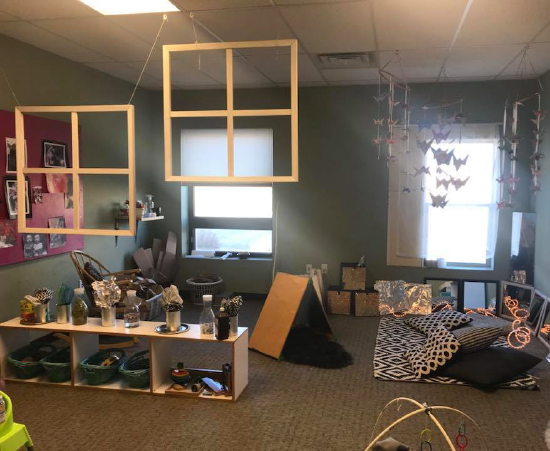
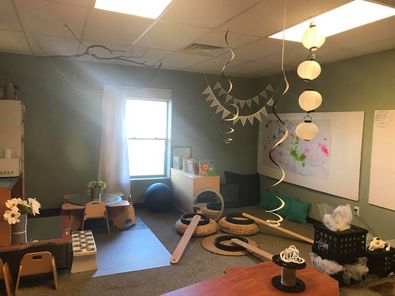
[1] Office of Head Start and Office of the Administration for Children and Families. (n.d.). Health and Safety Screener: is in the public domain
[2] Image by Amanda Taintor at Clovis College Child Development center is licensed CC: By-NC
[3] Image by Amanda Taintor at Reedley College Programs for Children Lab School is licensed CC: By-NC
[4] Image by Amanda Taintor is licensed CC: By-NC
[5] The California Infant/Toddler Curriculum Framework by the California Department of Education is used with permission
[6] California Department of Education. (2019). Infant/Toddler Learning and Development Program Guidelines, Second Edition. Sacramento: California Department of Education. Is used with permission.
[7] U.S. Department of Health & Human Services: Administration for Children and Families. (n.d.). Nurturing Environments. is in the public domain.
[8] California Department of Education. (2019). Infant/Toddler Learning and Development Program Guidelines, Second Edition. Sacramento: California Department of Education. Is used with permission.
[9] Image by INSPIRE BILINGUAL EARLY LEARNING CENTER in Taos NM

